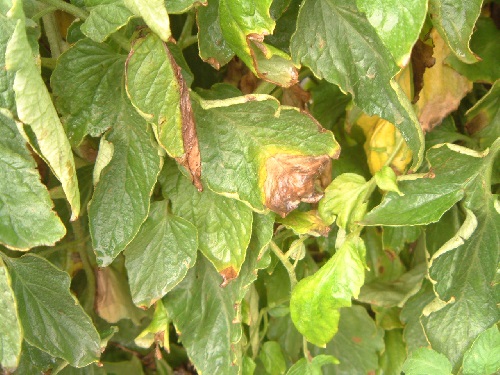Brown Spot And Black Pit Of Potato: The Other Early Blight

Potato growers the world over are familiar with early blight, a fungal disease that causes target-patterned lesions on potato leaves and shallow, dark, decayed areas on tubers. Most are less familiar with brown spot, which is similar in appearance and behavior to early blight, but is definitely a different disease. In this column, we’ll compare the two blights and discuss some important management differences.
Both brown spot and early blight are characterized by lesions on leaves, though brown spot lesions tend to be smaller and darker in color (Figure 1). Early blight lesions often have angular borders due to lesion enlargement being halted by the veins in the leaves (Figure 2). The lesions of both have a “target” pattern of concentric rings within the dead tissues of the leaf lesions. Brown spot lesions usually show up in the middle leaves of the potato plant while the first early blight lesions usually appear on the lower and older senescing leaves. Both diseases are also characterized by the ability to infect tubers. The tuber phase of brown spot is called “black pit.”
Favorable Conditions
The similarities between the two diseases also extends to the conditions that are favorable for disease development. High humidity and temperatures of 65°F favor spore formation and germination, but free moisture (droplets of water) are probably required for infection. The alternating wet and dry conditions provided by sprinkler irrigation can provide a very favorable environment for brown spot and early blight. Both fungi require wounds in the tubers before infection can occur.
There are other important differences. While the early blight fungus is becoming resistant to strobiluron (or QoI fungicides, Fungicide Resistance Action Committee code 11) in some areas of the country, the brown spot organism is inherently more resistant to the strobiluron fungicides and never has been all that well controlled by this class of fungicides. When in doubt, protectant fungicides such as mancozeb or chlorothalonil do a good job of management for brown spot and are also effective against early blight. Because wounds are necessary for tuber infection with both diseases, careful attention to proper skin set and bruise management during harvest can greatly minimize tuber and storage problems.










